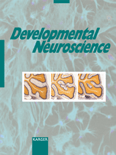
JOURNAL OF CEREBRAL BLOOD FLOW AND METABOLISM
Scope & Guideline
Driving innovation in cerebral blood flow studies.
Introduction
Aims and Scopes
- Cerebral Blood Flow Dynamics:
Research on the mechanisms and regulation of cerebral blood flow, including autoregulation, perfusion imaging, and the impact of various physiological and pathological conditions. - Neurovascular Coupling:
Studies exploring the relationship between neuronal activity and cerebral blood flow, including the effects of neurotransmitters and the role of astrocytes and endothelial cells. - Pathophysiology of Cerebrovascular Diseases:
Investigations into the mechanisms underlying cerebrovascular diseases, such as stroke, small vessel disease, and their implications for cognitive decline and neurodegeneration. - Therapeutic Strategies and Interventions:
Research focused on novel therapeutic approaches, including pharmacological treatments, neuroprotective strategies, and regenerative medicine techniques for cerebrovascular conditions. - Imaging Techniques and Biomarkers:
Development and application of advanced imaging techniques (e.g., PET, MRI) and biomarkers for assessing cerebral blood flow, metabolism, and neuronal integrity.
Trending and Emerging
- Neuroinflammation and Immune Response:
An increasing number of studies are focusing on the role of neuroinflammation and the immune response in cerebrovascular diseases, highlighting their importance in pathophysiology and recovery. - Cerebral Metabolism and Neuroenergetics:
There is a growing emphasis on understanding cerebral metabolism, including the effects of metabolic dysregulation on cognitive function and the implications for diseases like Alzheimer's. - Personalized Medicine Approaches:
Research aimed at personalized therapeutic strategies, particularly in stroke management and recovery, is becoming more prominent, reflecting a broader trend in medicine. - Advanced Imaging Techniques:
A notable increase in the use of advanced imaging techniques, such as high-resolution MRI and PET, is evident, particularly for assessing cerebrovascular health and treatment efficacy. - Microvascular and Capillary Research:
There is a rising interest in studying the microvascular environment and its implications for brain health, especially in the context of aging and neurodegenerative diseases.
Declining or Waning
- Basic Mechanistic Studies:
There seems to be a waning interest in purely basic mechanistic studies without translational implications, as the journal increasingly emphasizes studies with direct clinical relevance. - Older Imaging Techniques:
Traditional imaging methods, particularly those that do not incorporate advanced technologies (like machine learning applications), are appearing less frequently, as newer methodologies gain traction. - Focus on Animal Models:
Research primarily centered on animal models without substantial human relevance is declining, with a shift towards studies that bridge preclinical findings to clinical applications.
Similar Journals

JOURNAL OF CHILD NEUROLOGY
Elevating Knowledge in the Realm of Child NeurologyThe JOURNAL OF CHILD NEUROLOGY is a distinguished publication in the critical fields of neurology and pediatrics, published by SAGE PUBLICATIONS INC. With its ISSN 0883-0738 and E-ISSN 1708-8283, this journal has been a pivotal resource since its inception in 1986, serving the needs of researchers, clinicians, and students dedicated to advancing the understanding and treatment of neurological disorders in children. As evidenced by its impressive Q2 rankings in both Neurology (clinical) and Pediatrics, Perinatology, and Child Health, the journal has established a reputable position within the academic community, ranking in the 75th percentile for pediatrics and the 53rd percentile for clinical neurology. This periodical not only contributes to the body of knowledge in child neurology but also promotes interdisciplinary collaboration, engaging a global audience through innovative research articles and case studies. Although the journal is not open access, it remains committed to disseminating high-quality research aimed at improving pediatric health outcomes, making it an essential read for professionals and researchers dedicated to this crucial area of medicine.

CURRENT NEUROVASCULAR RESEARCH
Illuminating Pathways in Developmental NeuroscienceCURRENT NEUROVASCULAR RESEARCH is an esteemed peer-reviewed journal published by Bentham Science Publishers Ltd, focusing on the intricate relationships within the realms of cellular and molecular neuroscience, developmental neuroscience, and neurology. With an ISSN of 1567-2026 and an E-ISSN of 1875-5739, this journal has been contributing to the field since its inception in 2004 and is poised to continue through 2024. As a resource dedicated to disseminating innovative research findings, CURRENT NEUROVASCULAR RESEARCH is recognized within Category Quartiles as Q3 in multiple fields, including Neurology (clinical) and Developmental Neuroscience. Although classified in the Q4 category for Cellular and Molecular Neuroscience, the journal maintains a crucial role in fostering academic discourse and advancing our understanding of neurovascular dynamics. Researchers, professionals, and students will find valuable insights in this journal, offering access to a diverse range of studies that highlight cutting-edge developments in the field.

Degenerative Neurological and Neuromuscular Disease
Empowering innovation in neurological disease understanding.Degenerative Neurological and Neuromuscular Disease is a distinguished academic journal published by DOVE MEDICAL PRESS LTD, focusing on the latest advancements in the field of neurology and neuromuscular disorders. With a commitment to disseminating high-quality research, the journal aims to provide a critical platform for researchers, healthcare professionals, and students to share and engage with groundbreaking studies that advance our understanding of degenerative conditions affecting the nervous system. Although the journal's impact factor and h-index are currently not available, its open access model ensures that the valuable findings published within are accessible to a global audience, thereby fostering collaboration and innovation in neurological health. The journal's address is PO BOX 300-008, Albany, Auckland 0752, New Zealand, reflecting its international relevance and commitment to advancing the field of neurology. As the understanding of neurodegenerative diseases and neuromuscular challenges continues to evolve, Degenerative Neurological and Neuromuscular Disease serves as an essential resource for anyone dedicated to improving patient outcomes and advancing scientific knowledge.

EUROPEAN JOURNAL OF NEUROLOGY
Shaping the Landscape of Neurological Research Since 1994.EUROPEAN JOURNAL OF NEUROLOGY, published by WILEY, stands as a leading platform for the dissemination of innovative research and clinical developments in the field of neurology. With a robust impact factor and prestigious rankings, including being positioned as Q1 in both Neurology and Clinical Neurology categories, the journal plays a pivotal role in shaping neurological sciences from 1994 to 2024. Its Scopus rank highlights its importance, being in the 88th percentile for clinical neurology and 87th percentile for neuroscience. Located in the United Kingdom, the journal thrives as a vital resource for researchers, clinicians, and students dedicated to improving neurological health outcomes. Although it does not offer Open Access, its subscription-based model ensures high-quality peer-reviewed articles are accessible to a global audience, reflecting the continuous pursuit of excellence in neurological research and patient care.

Journal of NeuroInterventional Surgery
Transforming Patient Care Through Innovative Research.The Journal of NeuroInterventional Surgery, published by the BMJ Publishing Group, stands at the forefront of advancing knowledge in the fields of neurointerventional procedures, neurology, and surgical techniques. With an impressive impact factor reflective of its high-quality contributions, this journal occupies a prestigious position within the Q1 category across multiple domains: Medicine (miscellaneous), Neurology (clinical), and Surgery, ranking 11th in Medicine Surgery and 47th in Neurology Clinical out of their respective categories per Scopus metrics. Since its inception in 2009, it has provided an essential platform for researchers, clinicians, and students to disseminate innovative findings and engage with groundbreaking developments in neurointerventional practices. As a prominent publication in the United Kingdom, located at British Med Assoc House, it is committed to open communication within the community, fostering collaboration, and setting the stage for future innovations in patient care and outcomes.

INTERVENTIONAL NEURORADIOLOGY
Connecting Experts to Enhance Neuroradiological PracticesINTERVENTIONAL NEURORADIOLOGY, published by SAGE PUBLICATIONS INC, is a key journal within the interdisciplinary fields of cardiology, neurology, and radiology, focusing on the latest advancements and clinical practices in neuroradiology. With an ISSN of 1591-0199 and an E-ISSN of 2385-2011, this journal has established itself as a vital resource since its inception in 1996, attracting contributions from leading experts worldwide. Currently categorized in the Q2 category for Cardiology and Cardiovascular Medicine and Radiology, and Q3 for Clinical Neurology as of 2023, INTERVENTIONAL NEURORADIOLOGY has gained recognition for its impactful research, reflected in its ranking within the Scopus metrics. Although not an open-access publication, its rigorous peer-reviewed articles provide indispensable knowledge that enhances the practice and understanding of interventional procedures. Researchers, clinicians, and students will find this journal a valuable avenue for insights into the evolving landscape of neuroradiological interventions, ultimately contributing to improved patient outcomes.

BONE
Elevating Research in Bone Biology and DiseaseBONE, published by Elsevier Science Inc, is a leading peer-reviewed journal that has established itself as a pivotal resource in the fields of Endocrinology, Diabetes and Metabolism, Histology, and Physiology. Since its inception in 1985 and continuing to 2025, this journal has consistently provided high-quality research, evidenced by its impressive Q1 category rankings and strong performance in Scopus metrics—ranking #7 in Histology and achieving notable percentiles in related fields. With a commitment to advancing knowledge and understanding in bone biology and associated pathological conditions, BONE serves as an essential platform for researchers and professionals aiming to contribute to the discourse in skeletal health and disease. While it is not an open-access publication, the journal ensures a broad dissemination of pivotal research findings, making it a critical asset for academics and practitioners devoted to fostering advancements in medical sciences.

Journal of Pediatric Neurology
Navigating the complexities of childhood neurological disorders.Journal of Pediatric Neurology, published by GEORG THIEME VERLAG KG, stands as a dedicated resource in the field of pediatric neurology, navigating the complex interplay of neurological and developmental disorders affecting children. With its ISSN 1304-2580 and E-ISSN 1875-9041, this journal has been a pivotal platform for advancing research since its inception in 2003, and continues to present critical findings and discussions up to 2024. Although currently categorized in the Q4 quartile for both Neurology (Clinical) and Pediatrics, Perinatology and Child Health within Scopus rankings, the journal's commitment to fostering scholarly dialogue is essential for researchers, clinicians, and students dealing with pediatric patients. Its structured coverage of various neurological disorders, treatment strategies, and innovative therapies contributes to the broader understanding of pediatric neurology, despite the challenges noted in its ranking percentile. By encouraging submissions from diverse disciplines, the journal aims to enhance clinical practice and bridge gaps in knowledge, ensuring a multidisciplinary approach to child health and development.

DEVELOPMENTAL NEUROSCIENCE
Advancing the Frontiers of Brain DevelopmentDEVELOPMENTAL NEUROSCIENCE, published by KARGER, is a vital academic journal dedicated to advancing the field of neurodevelopmental research. Since its inception in 1978, this journal has been instrumental in disseminating high-quality studies that explore the complexities of brain development and function throughout the lifespan. With an impact factor that places it in the second quartile (Q2) of Developmental Neuroscience and Neurology categories, it ranks among the top publications in its field, offering valuable insights for researchers, clinicians, and students alike. Though primarily subscription-based, the journal remains committed to fostering academic discourse and collaboration through its extensive repository of original research articles, reviews, and case studies. The journal is located at ALLSCHWILERSTRASSE 10, CH-4009 BASEL, SWITZERLAND, and its scope spans critical areas of inquiry within developmental neurology, providing a platform for emerging ideas and methodologies. As such, DEVELOPMENTAL NEUROSCIENCE serves not only as a critical resource for seasoned professionals but also as an enriching educational tool for the next generation of neuroscientists.

CEREBRAL CORTEX
Advancing knowledge in cortical neuroscience.CEREBRAL CORTEX, published by Oxford University Press Inc, is a premier journal dedicated to advancing the field of neuroscience, specifically focusing on the cellular, molecular, and cognitive aspects of cortical structure and function. With an impressive impact factor that situates it in the top quartile (Q1) of its categories for 2023, this journal holds significant relevance for researchers and professionals interested in the latest discoveries and methodologies in both Cognitive Neuroscience (ranked #31 out of 115) and Cellular and Molecular Neuroscience (ranked #48 out of 97). Operating without an open access model, it ensures rigorous peer review and dissemination of high-quality research from across the globe. Since its inception in 1991, CEREBRAL CORTEX has established itself as a critical platform for educators and inventors, pushing the boundaries of knowledge in understanding brain function and its implications for behavior. Researchers and students alike will find this journal an invaluable resource for both foundational and cutting-edge studies in neuroscience.